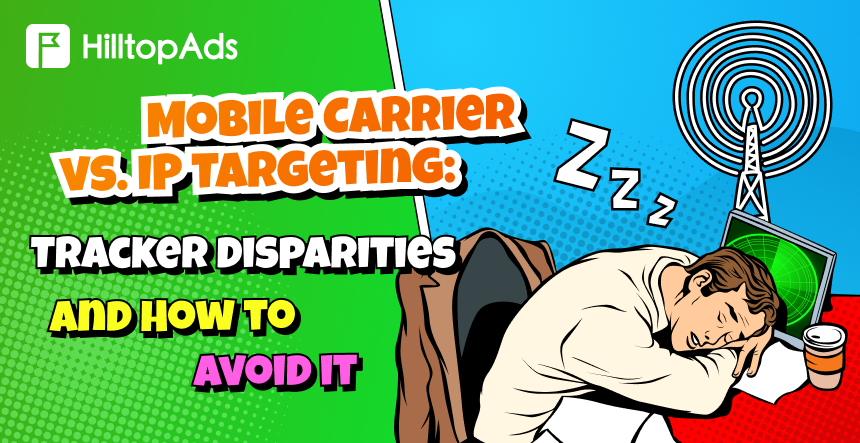In affiliate marketing, it’s not enough to buy traffic of high quality to run profitable ad campaign. Another important aspect of every launch is precise targeting. This is why in the past, we’ve explored which browsers are most popular in different countries and how proxy traffic can be an opportunity for affiliates. Now, we have another important topic before us: How accurate is mobile carrier targeting across different trackers? And is there an alternative targeting method that could yield better results? (spoiler: yes, there is).
It’s not a secret that accurately attributing traffic data—like mobile carriers and ISPs—can significantly impact ad campaign performance. But what if the very tools you rely on are not as precise as you think?
Our tech team conducted a research to uncover nuances of carrier traffic attribution by analyzing data from three popular trackers: Voluum, Binom, and Keitaro. This study analyzes the way each tracker detects mobile carriers and ISPs traffic, exposing surprising inconsistencies, as well as practical strategies for better targeting.
In this article, you’ll discover:
- Why mobile carrier targeting doesn’t always deliver expected results.
- Examples of how the same traffic attributes differently across trackers.
- Why targeting by IP range could outperform carrier-specific targeting.
How Did We Conduct the Research?
To ensure accurate comparisons, we set up a structured chain of redirects: Voluum → Binom → Keitaro, analyzing traffic from 50 major carriers across 200 impressions. By using such set up we managed to get a unique perspective on how each tracker attributes the same traffic, highlighting critical differences in their data reporting.
To understand which attributes will be compared, it’s important to note that trackers provide different traffic data. Voluum and Keitaro report both ISP and mobile carrier information for each impression, while Binom only provides ISP data. Therefore, the analysis will be focused on two ares:
- Comparison of mobile carrier data between Voluum and Keitaro.
- Analysis of ISP data across all three trackers (Keitaro, Binom, and Voluum).
Now as we’ve established the value of this research for affiliates and clarified its conditions, let’s jump into the data and understand how these findings can impact your strategies and guide you toward successful mobile advertising!
Mobile Carrier Analysis
Keitaro and Voluum Disparities
Our first analysis highlights how Voluum and Keitaro classify mobile carriers.
The chart below represents a comparison of the tested traffic, which was identified as mobile carrier traffic by Voluum, but for some reason, some parts were not recognized as mobile carrier traffic by Keitaro. Here is more detailed description of X- and Y- axes of the infographic below:
- The X-axis shows the ratio of “Unknown” mobile carrier traffic in Keitaro compared to Voluum’s data.
- The Y-axis lists the different mobile carriers identified by Voluum.
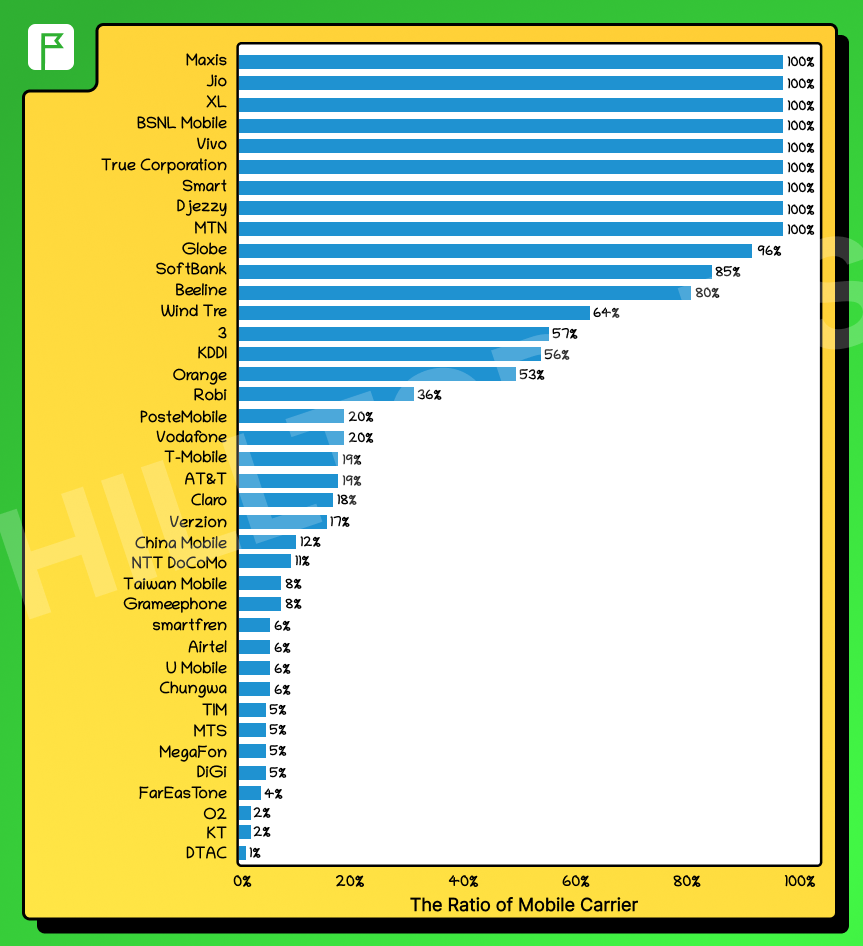
From this data, we observe the following mobile carriers detected by Voluum but not recognized by Keitaro:
- Maxis (Malaysia)
- Jio, BSNL Mobile (India)
- XL (Indonesia)
- Vivo (Brazil)
- True (Thailand)
- Smart, Globe (Philippines)
- Djezzy (Algeria)
- MTN (South Africa)
- SoftBank (Japan)
- Beeline (Russia)
But this is just the beginning. Keep following article for even more unexpected results.
Misattribution of Mobile Carriers between Keitaro and Voluum
As it turns out, not only can certain trackers miss information about mobile carriers, but they may also misinterpret them, assigning the same traffic to different carriers. Sounds confusing? Take a look at the data to better understand what’s happening (note that mobile carriers on the left side are identified by Voluum, right side – Keitaro).
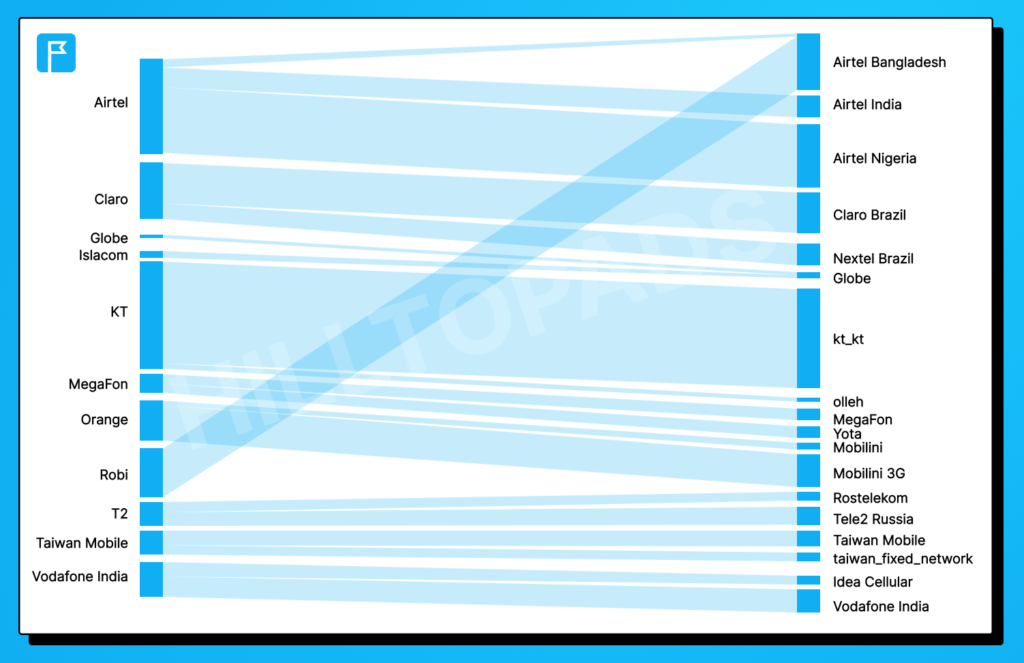
You can see that there are a lot of misattribution between Voluum and Keitaro data. As an examples:
- Robi (Voluum) aligns entirely with Airtel Bangladesh (Keitaro), but Keitaro’s Airtel classification includes traffic from Voluum’s Airtel data.
- Claro Brazil (Keitaro) overlaps with Claro and Nextel Brazil (Voluum).
In conclusion to this section, we can say this: Keitaro’s classification is more detailed, as the tracker identifies individual subsidiaries and brands within major mobile carriers. But, still, there are certain disparities that can be seen in both trackers’ cases.
ISP Analysis
Now, let’s include a third major tracker in our research, and compare how Keitaro, Binom, and Voluum attribute ISP traffic.
Disparities in ISP attribution
The infographic below may look intimidating, but don’t worry—we’ve got you covered. Before diving in, keep this in mind: the first (left) column represents Voluum, the middle one is for Binom, and the last (right) column is for Keitaro. Now, you’re ready to take in the bigger picture:
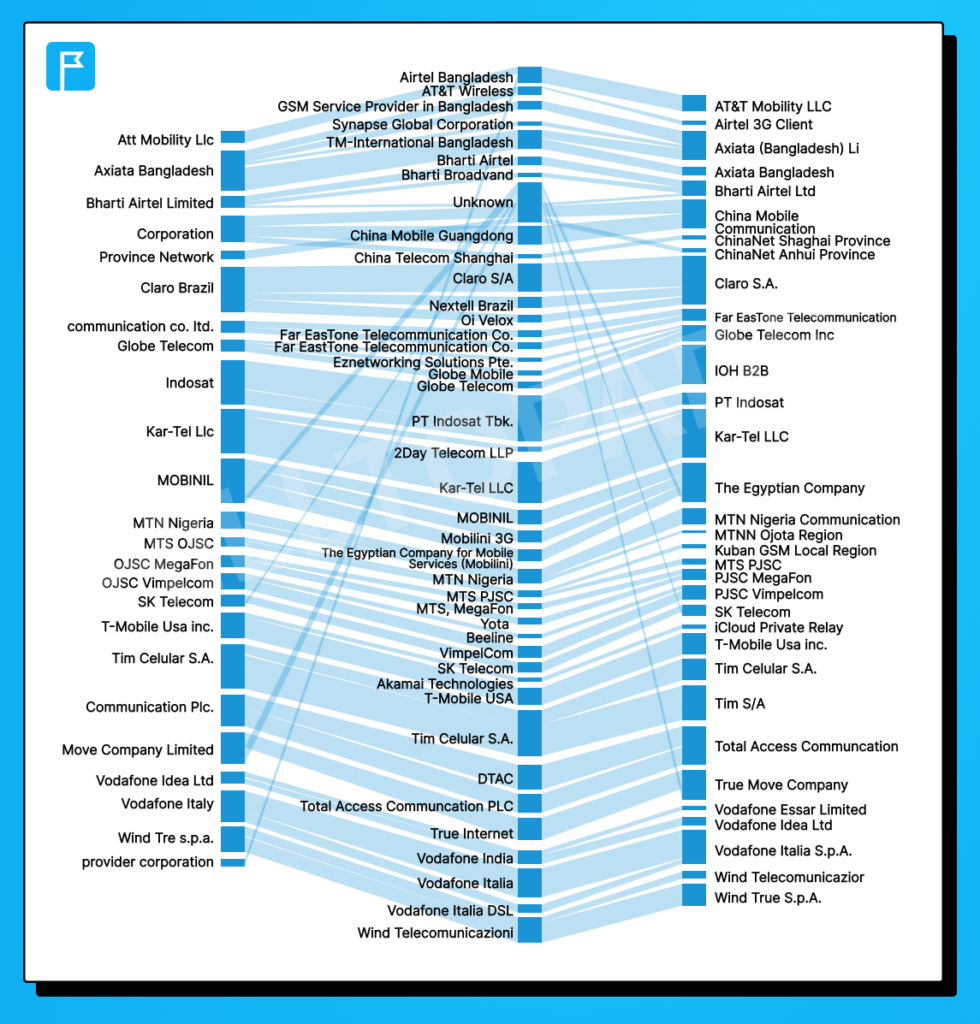
Key takeaways:
- Binom and (to a lesser extent) Keitaro provide more detailed ISP classifications compared to Voluum.
- Binom completely (or partially) failed to identify several ISPs (e.g. Axiata Bangladesh, Kar-Tel Llc, Wind Tre S.p.A., Mobinil, SK Telecom, Move Company limited).
- There are minor inaccuracies in the identification of Axiata (Bangladesh), Claro Brazil, and Globe between all three trackers.
Now, let’s take a closer look at the ISPs that Binom struggle to identify.
ISPs Not Identified by Binom
Similar to our analysis in the first part of the research, we’ll now focus on the ISPs (as attributed by Voluum) that were either partially or completely unidentified by the Binom tracker.
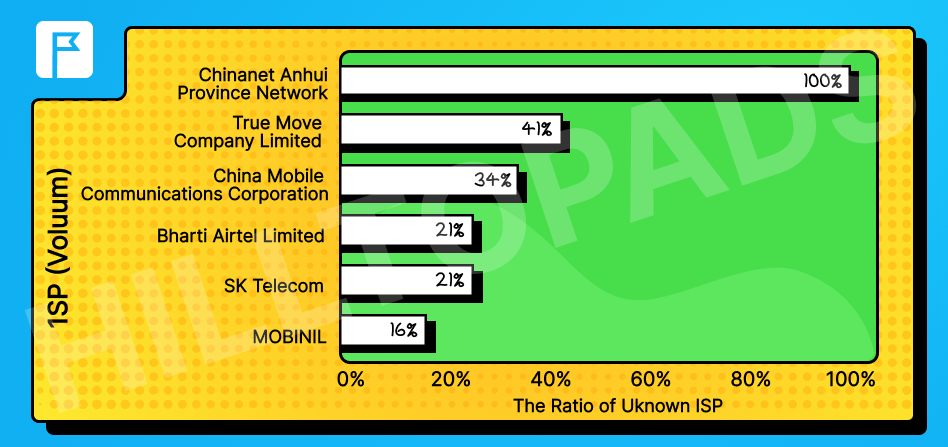
Most of them we’ve already mentioned before, but now you can see in details the exact shares of unidentified by Binom ISP traffic (compare to Voluum results).
The only question that’s left: is there any way to avoid this lack of precision and consistency in tracker’s data, when it comes to ISP and Mobile Carrier targeting?
IP Range Targeting
HilltopAds ad network offers you an effective and easy to use solution in case you need one – IP-range targeting. If you haven’t had an experience with it yet, then basically it works like this:
- Step 1: Look up the operator’s ASN using the corresponding services (e.g. bgp.he.net).
- Step 2: Identify the IP ranges associated with that ASN.
- Step 3: Cross-reference with public databases or geolocation services for confirmation.
- Step 4: Test a sample IP range using ping or traceroute to ensure it matches the desired operator.
- Step 5: Run an ad campaign with the defined IP-range in targeting settings.
By following these five steps, you can define and utilize IP ranges for a specific mobile operator.
As always, there are multiple ways to define the IP-range. Here are the most popular methods you can use:
Consult Public Databases
Use public databases like RIPE NCC, ARIN, or APNIC to find IP ranges assigned to specific mobile operators. These databases manage IP allocations and offer search tools. Simply visit their sites and search by operator name or ASN number.
Examples: RIPE Database, ARIN Whois, APNIC Whois Search.
Use ASN Lookups
Operators typically own one or more ASNs. Tools like bgp.he.net or ipinfo.io let you search for an operator’s ASN and find associated IP ranges.
Once you’ve defined the IP range, simply create an ad campaign in HilltopAds and enter the range in the corresponding field.
Conclusion
Great! We’ve covered everything about precision of tracker’s data for both ISP and Mobile Carriers, and even learned how to reduce the bad influence of different discrepancies through the IP-range targeting.
Here’s a quick overview of main results of this research:
Mobile Carriers
- Binom lacks mobile carrier grouping, focusing only on ISPs.
- Voluum and Keitaro offer similar classifications, but Keitaro is more detailed.
- Some carriers are entirely or partially missed by Keitaro.
ISPs
- Binom’s classifications are detailed but incomplete for some traffic.
- Voluum and Keitaro provide comparable but occasionally inconsistent data.
For campaigns requiring precise targeting, IP range targeting is a dependable solution. By understanding tracker discrepancies and leveraging IP data, you can optimize your campaigns for better performance.
Feel ready to put these insights into action? Launch ads with HilltopAds ad network, optimize your targetings and maximize your profits today!


















